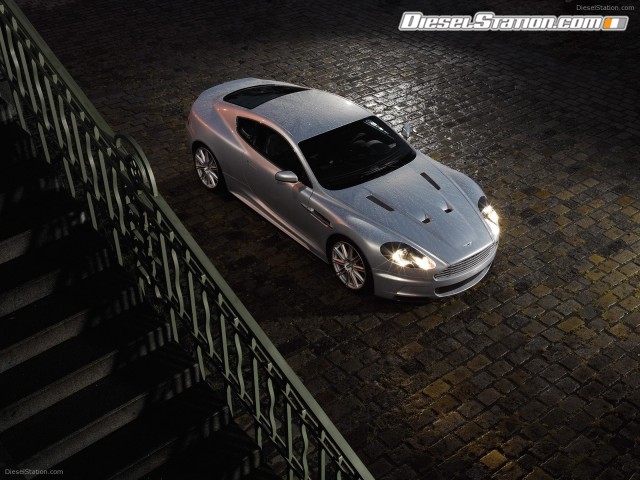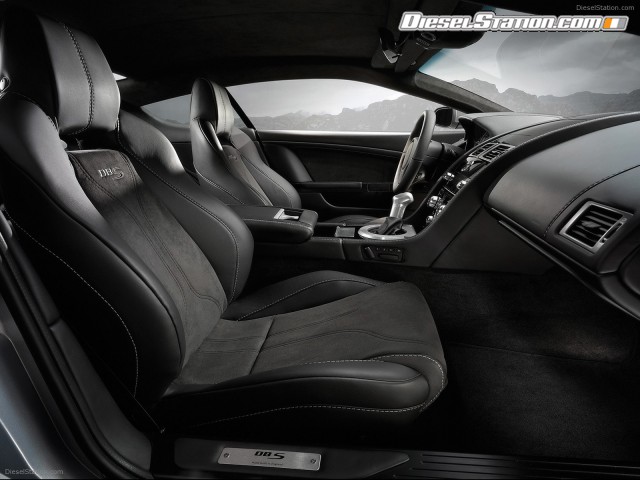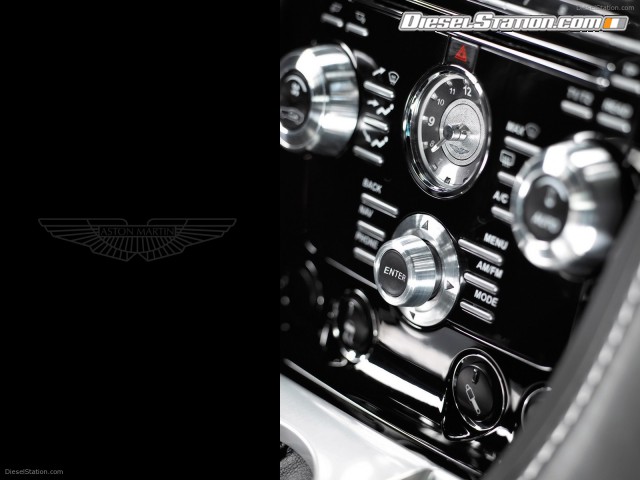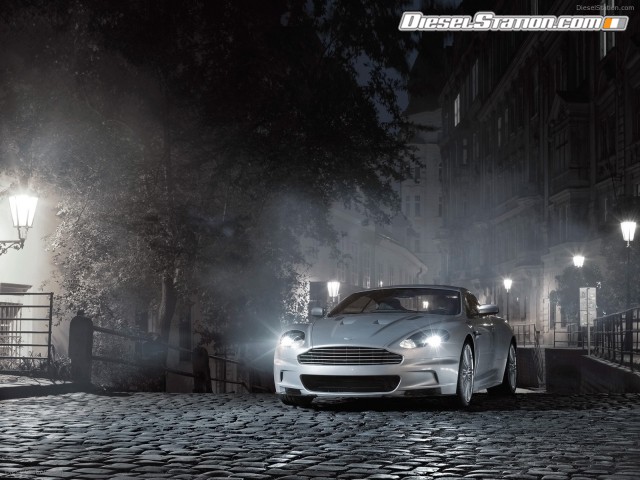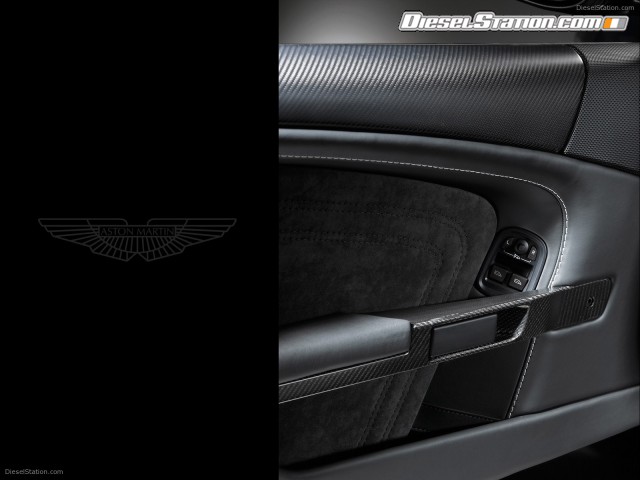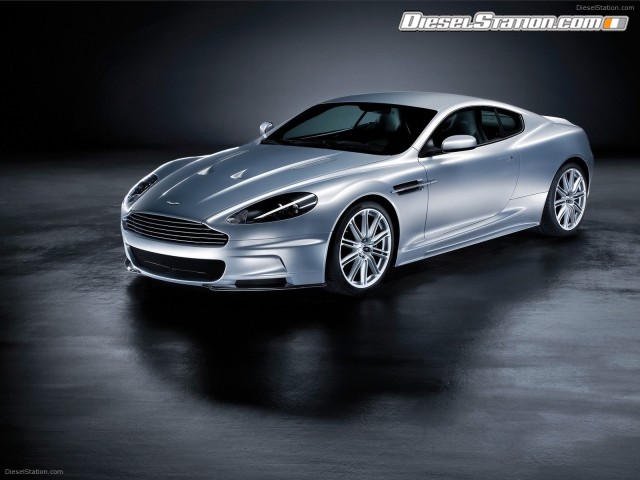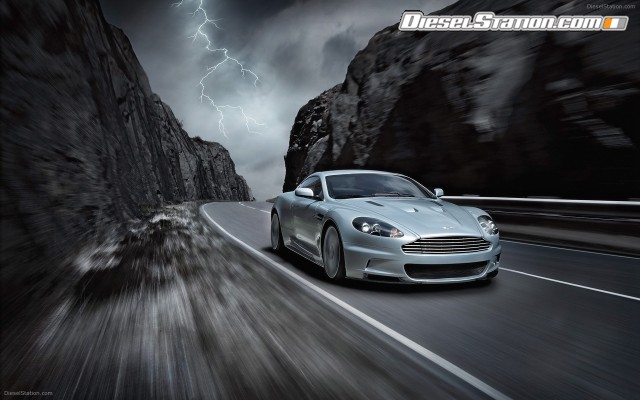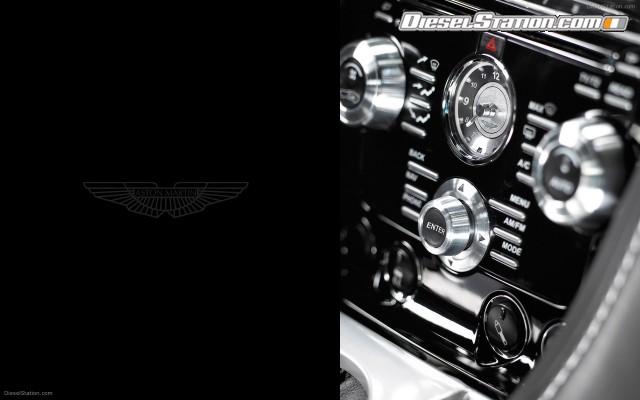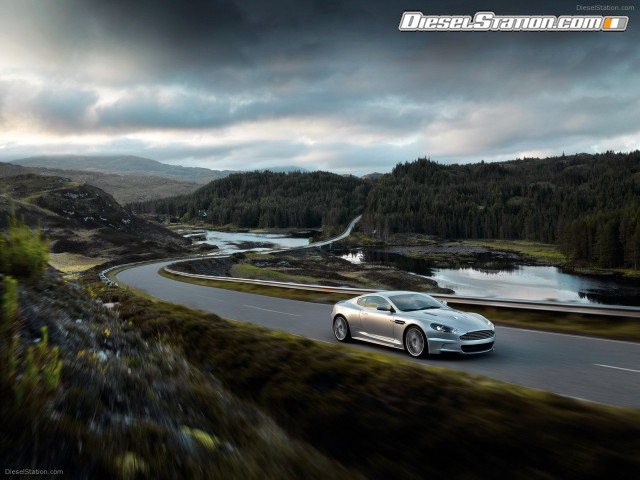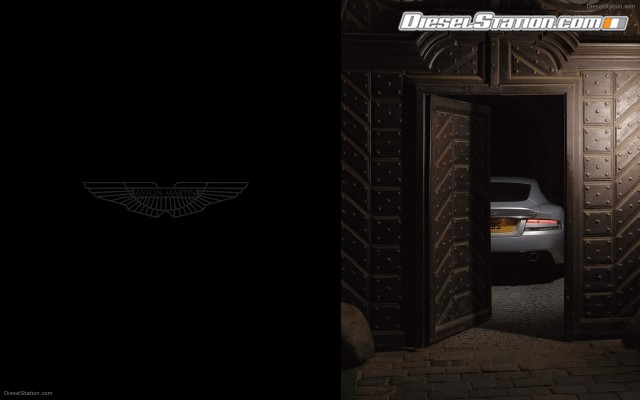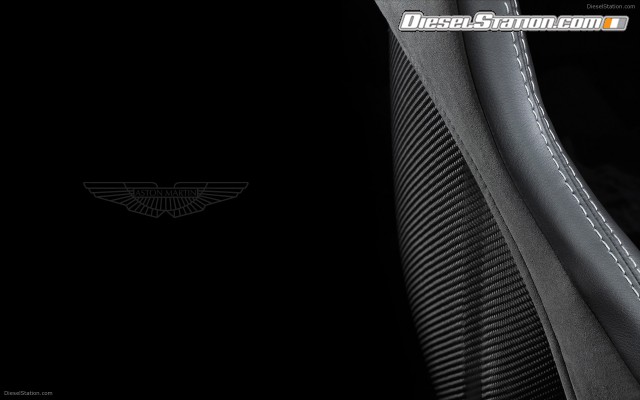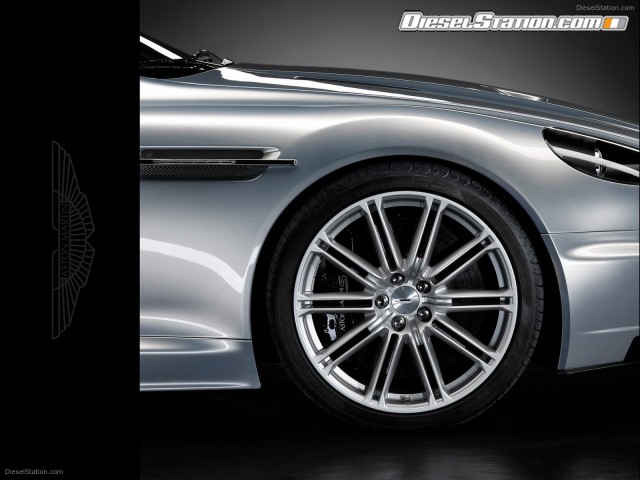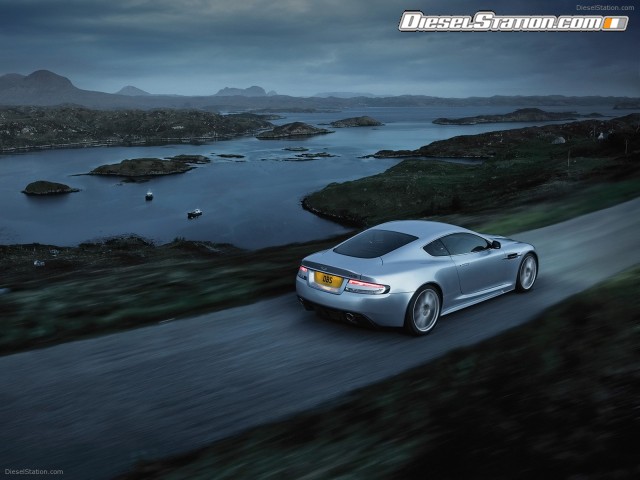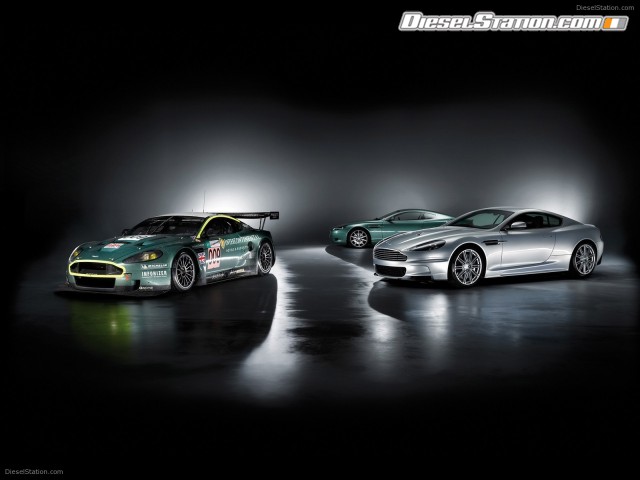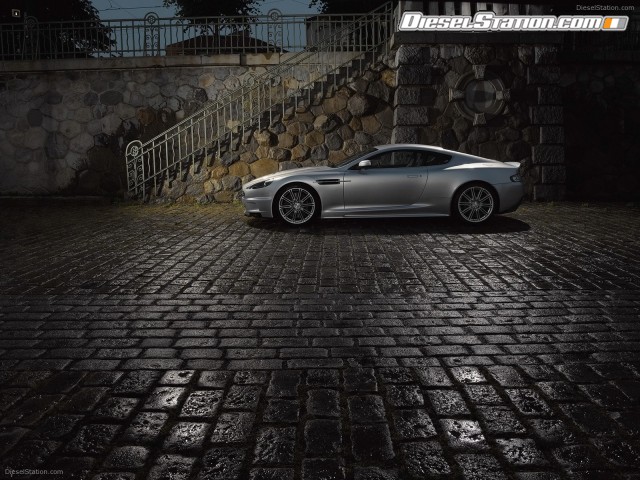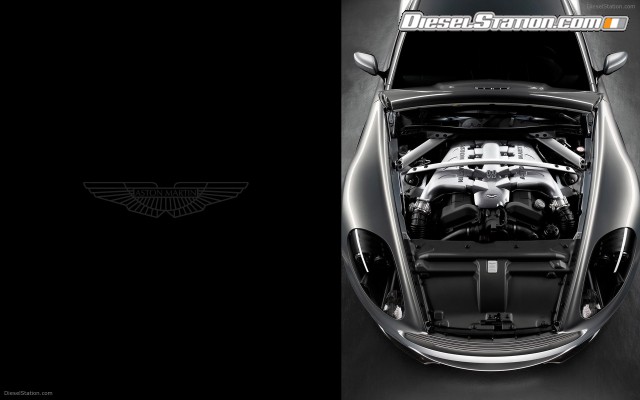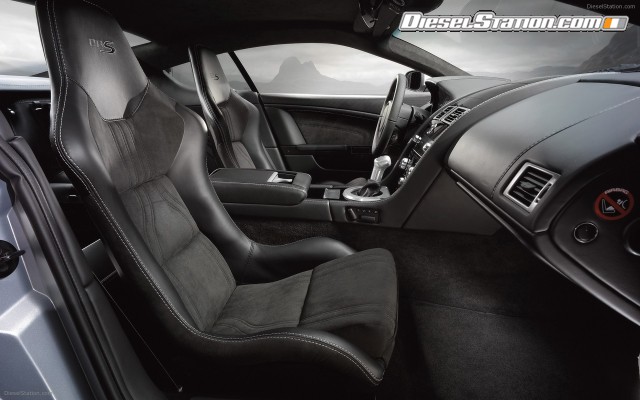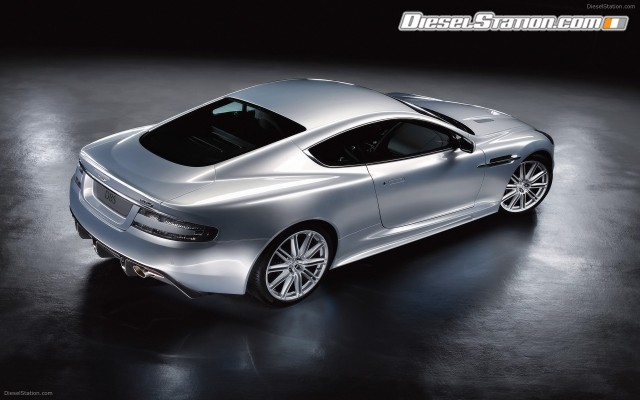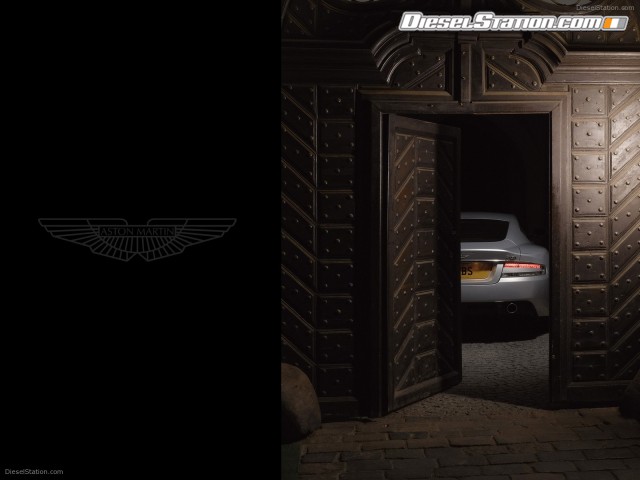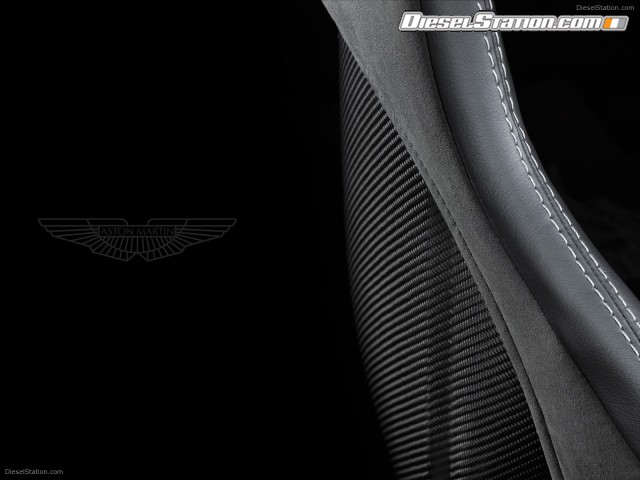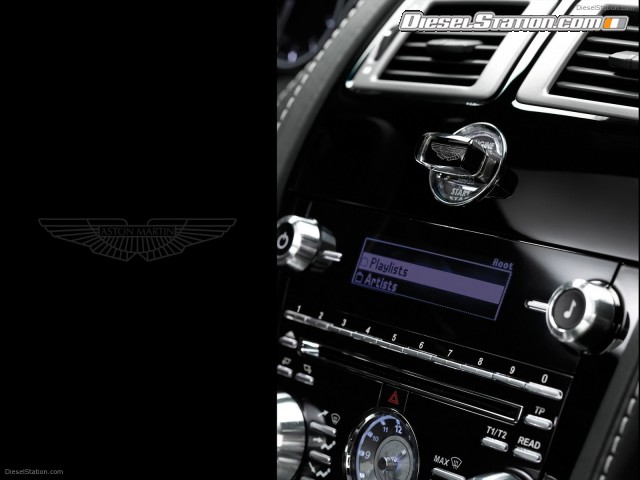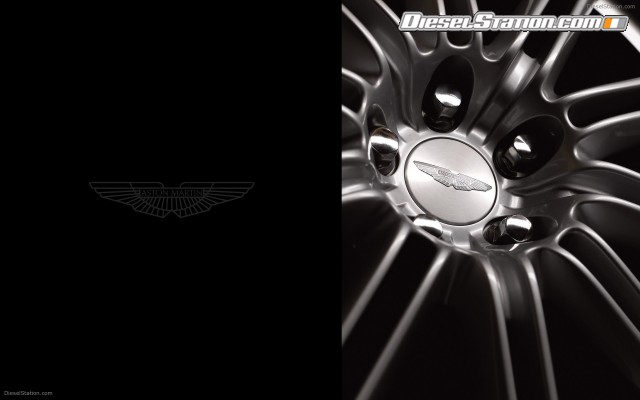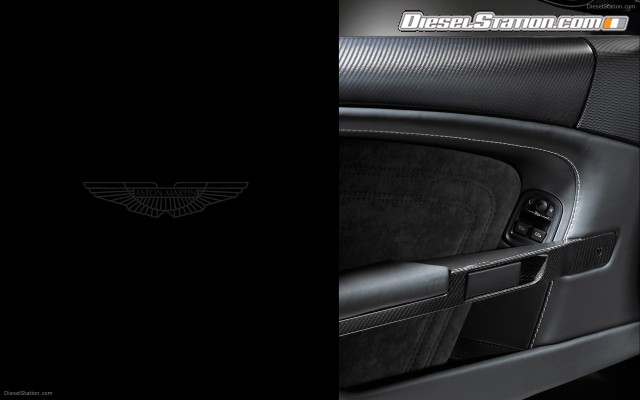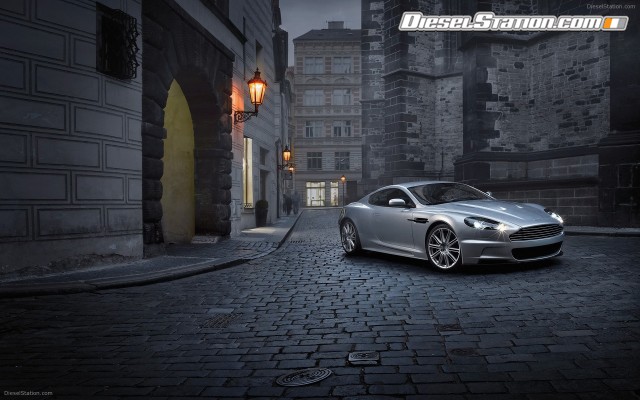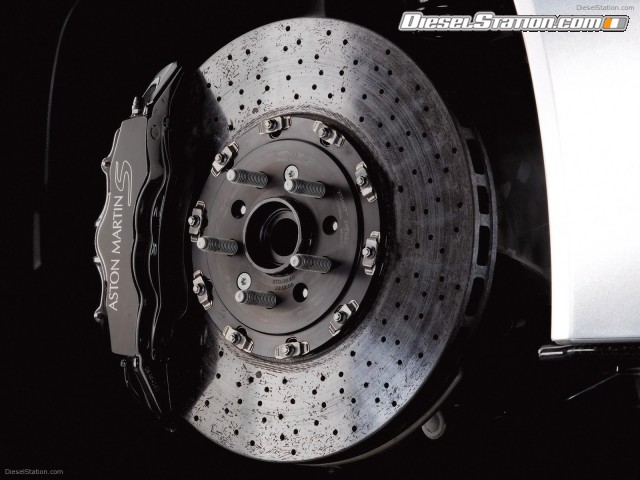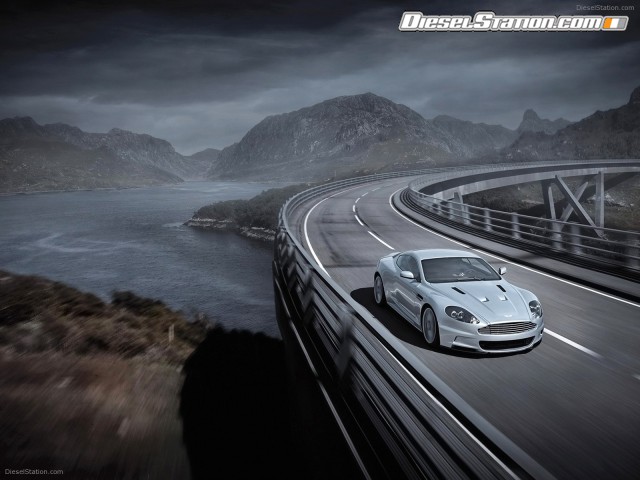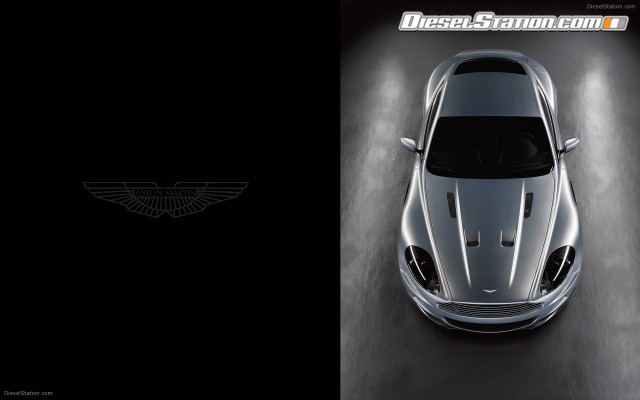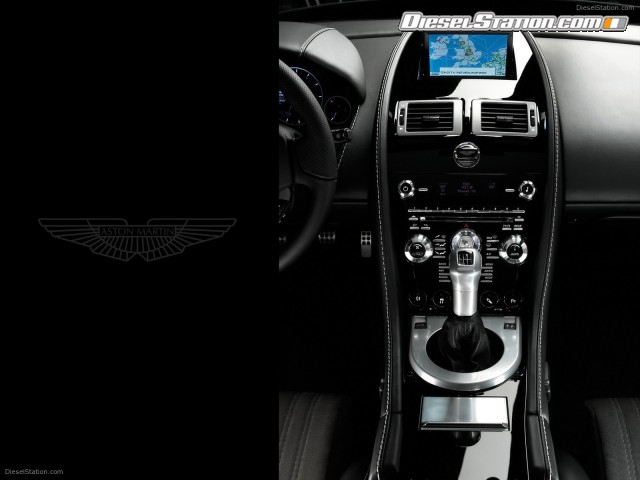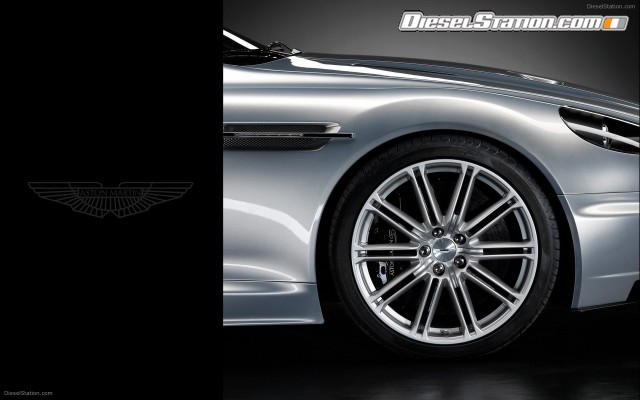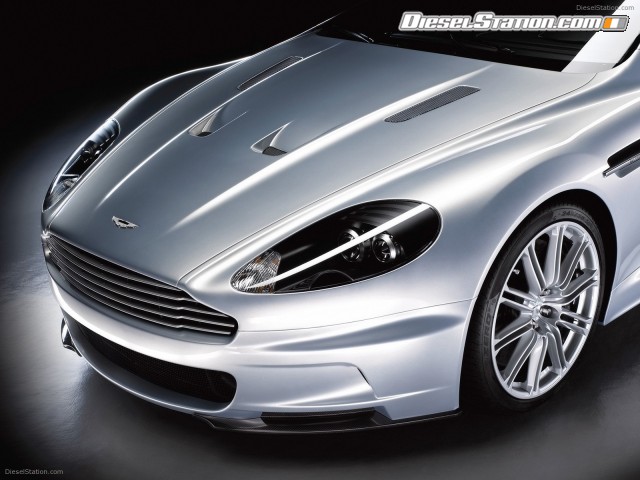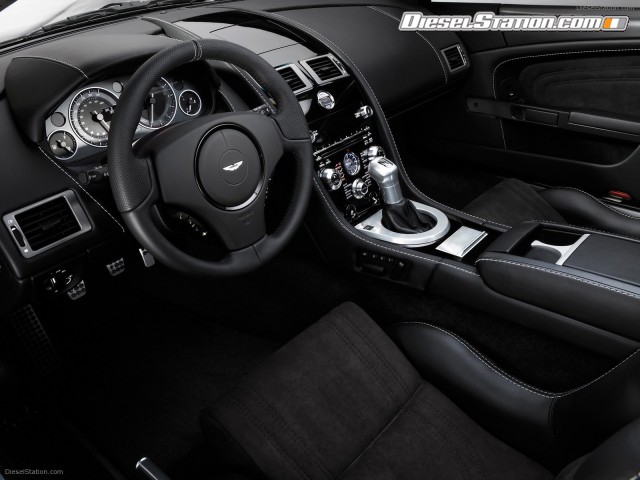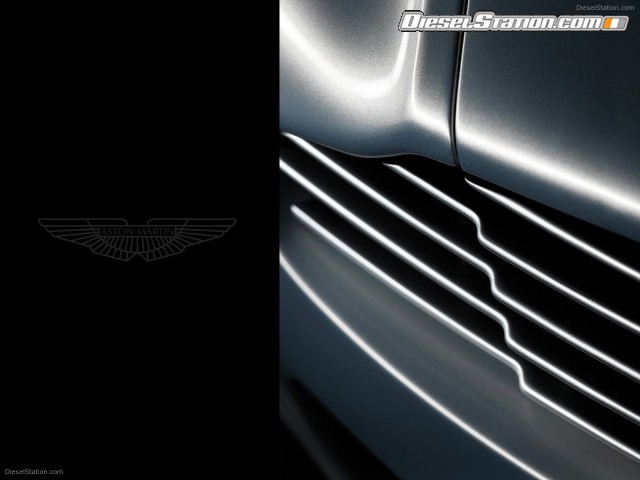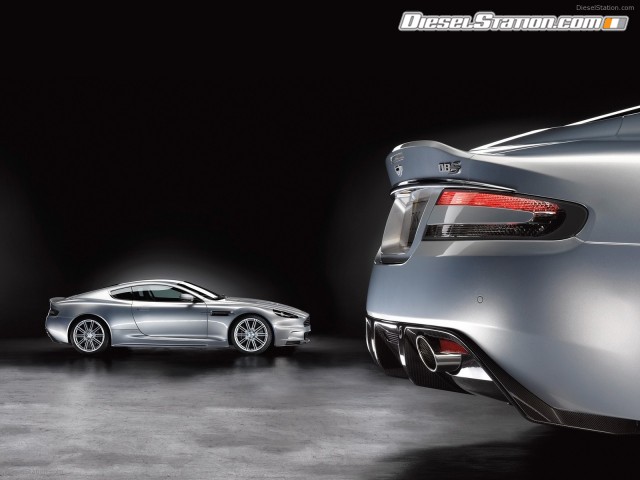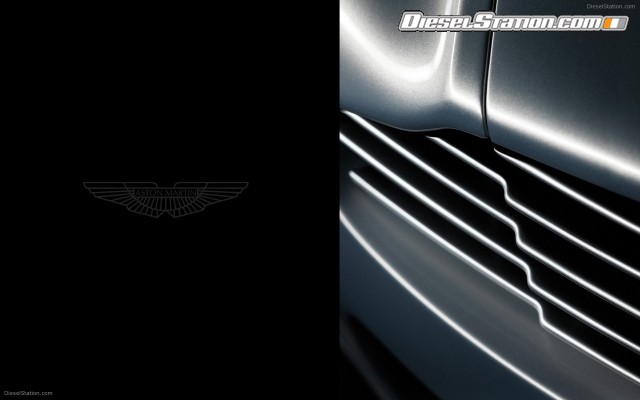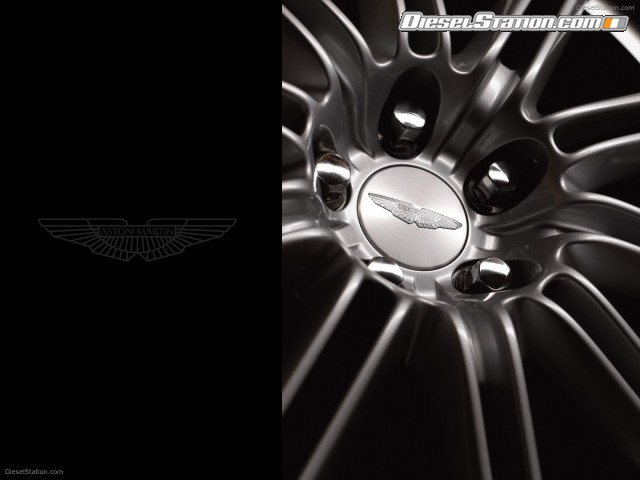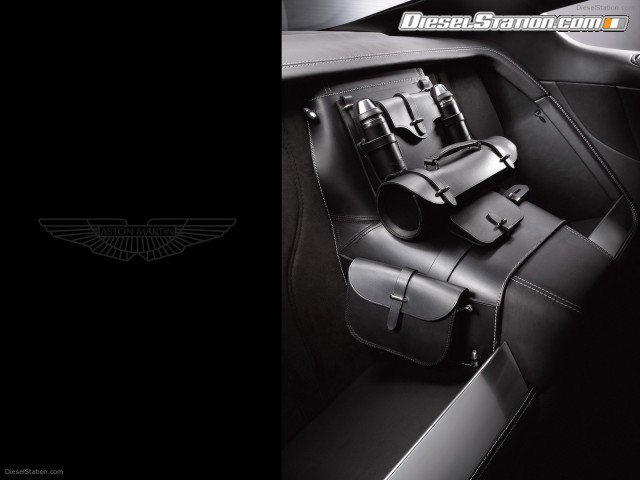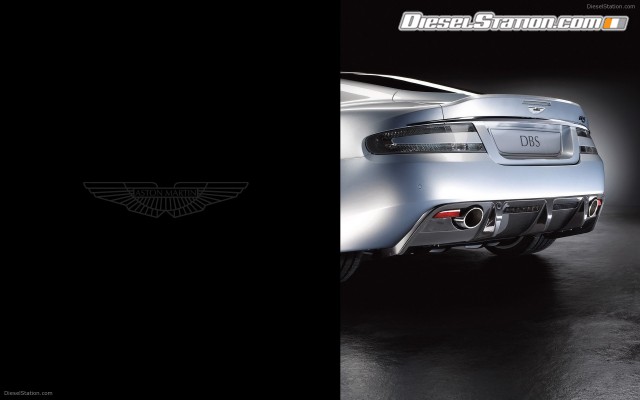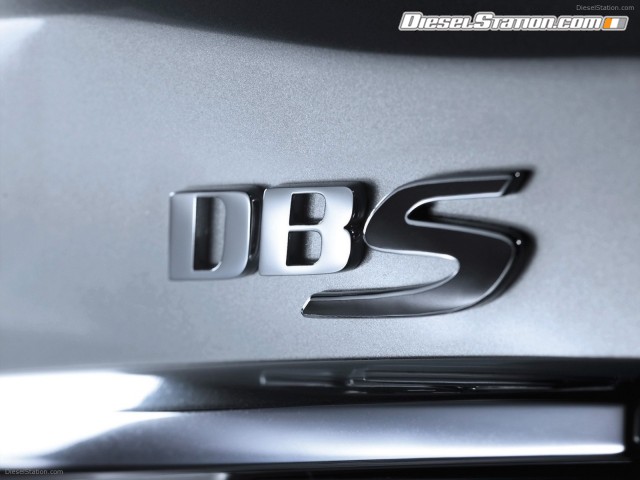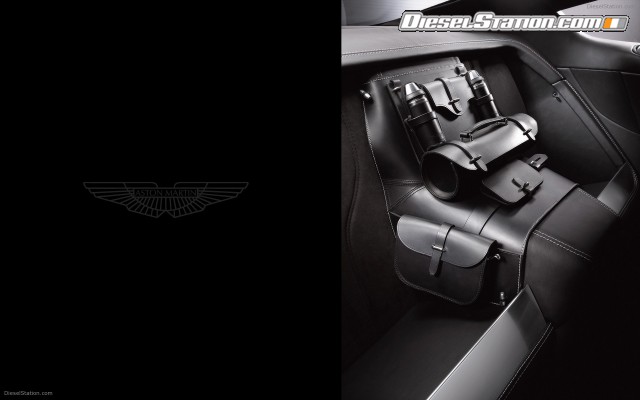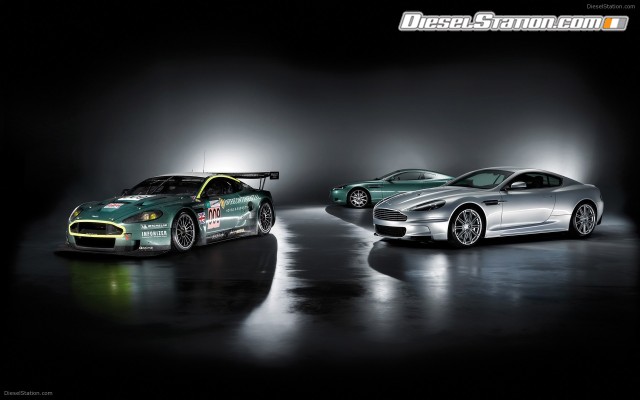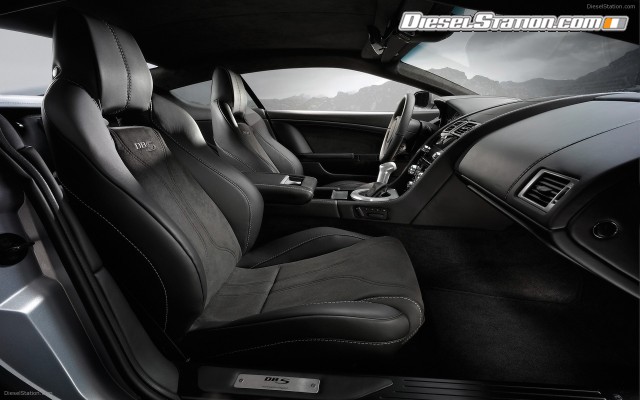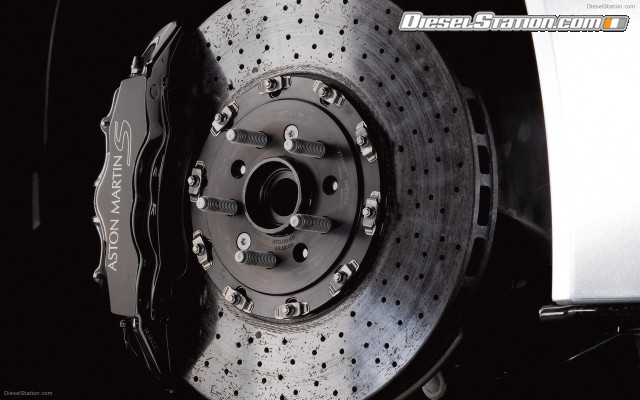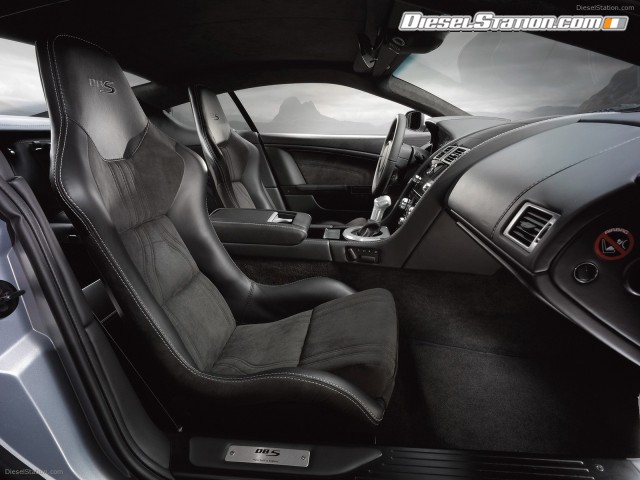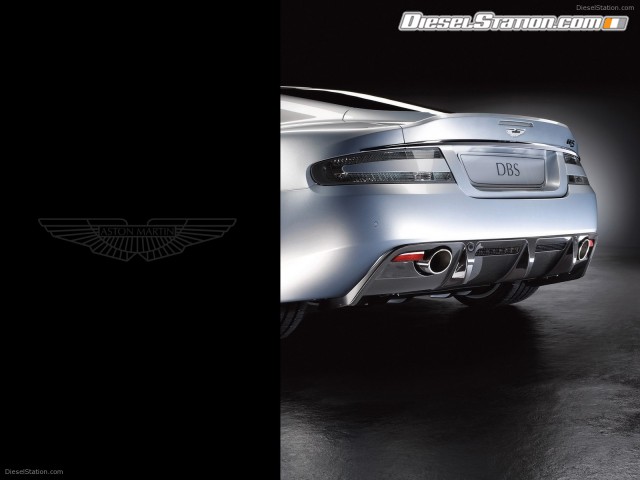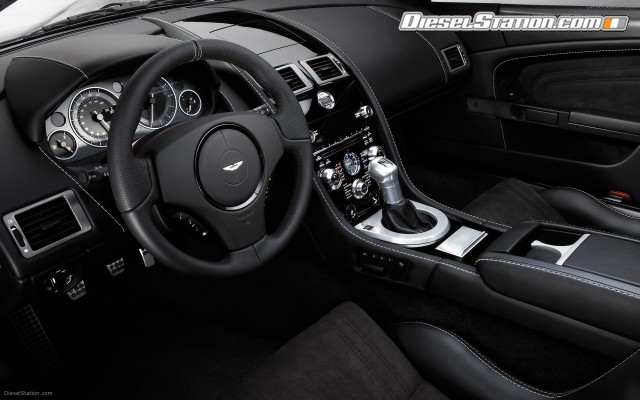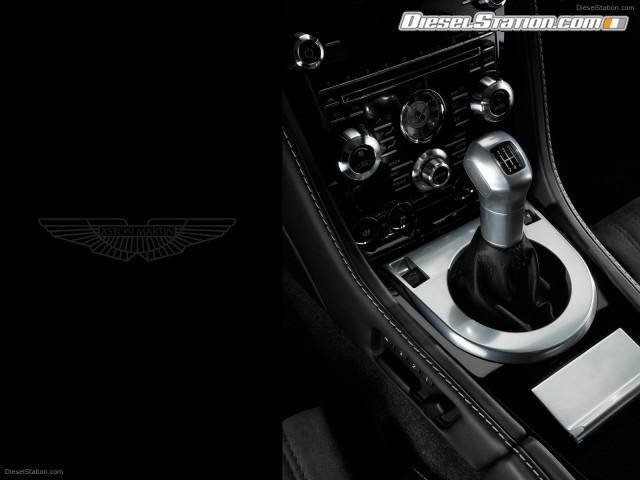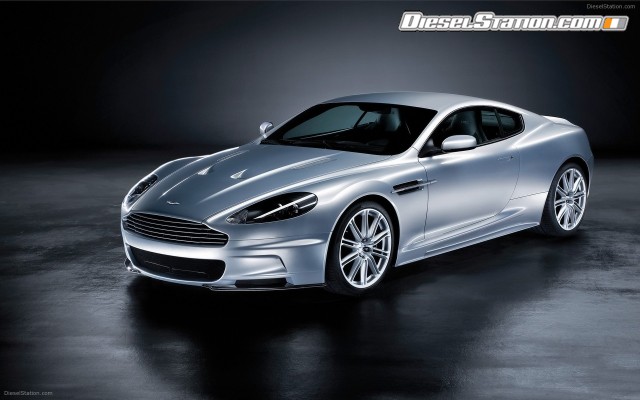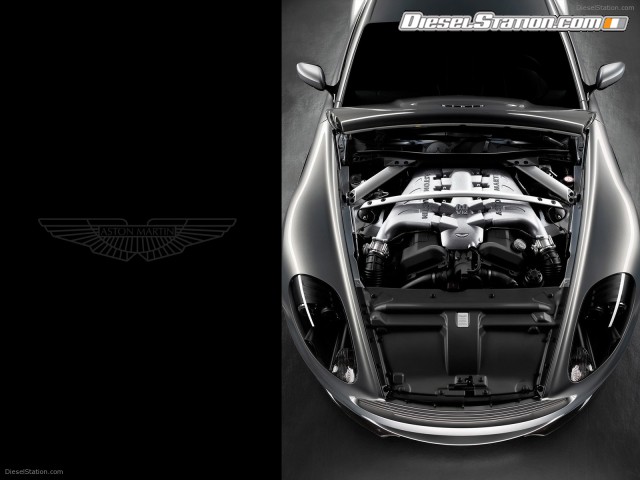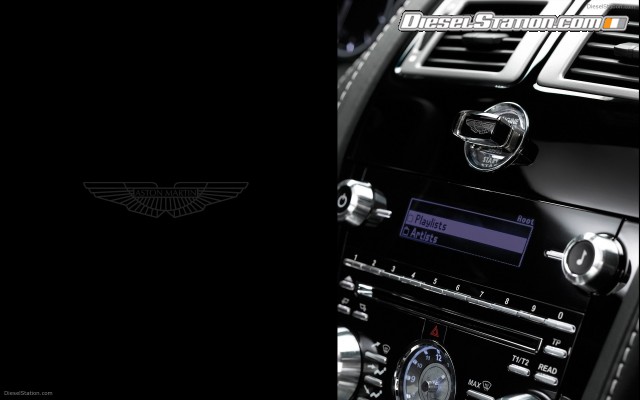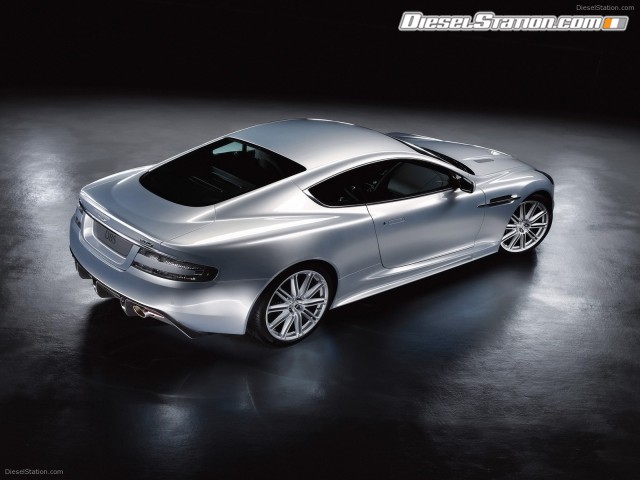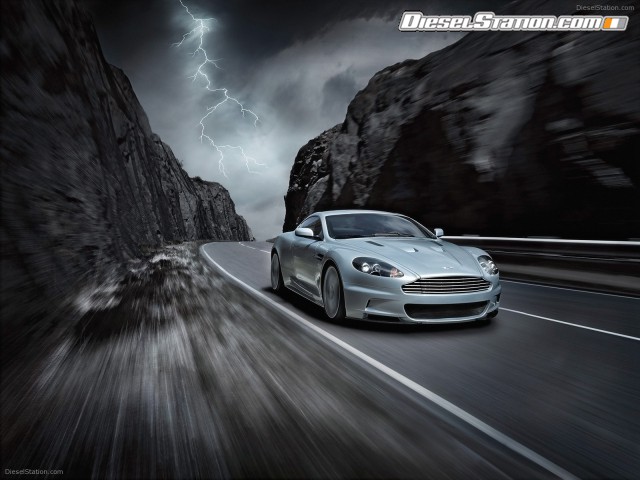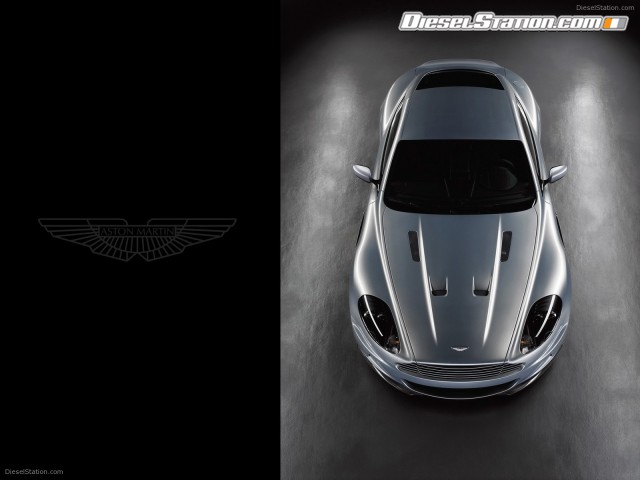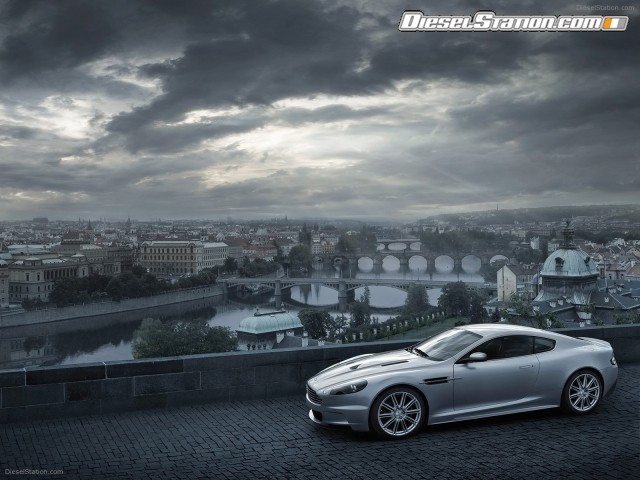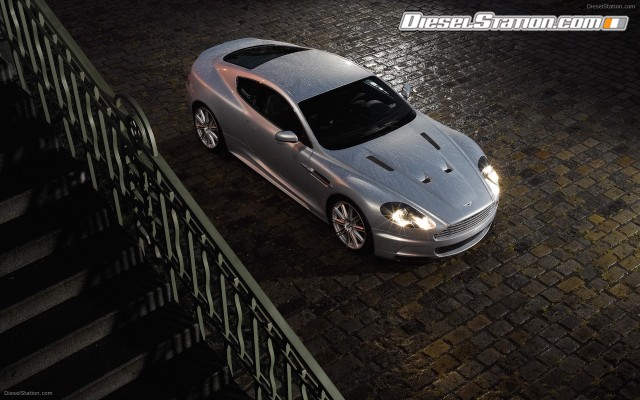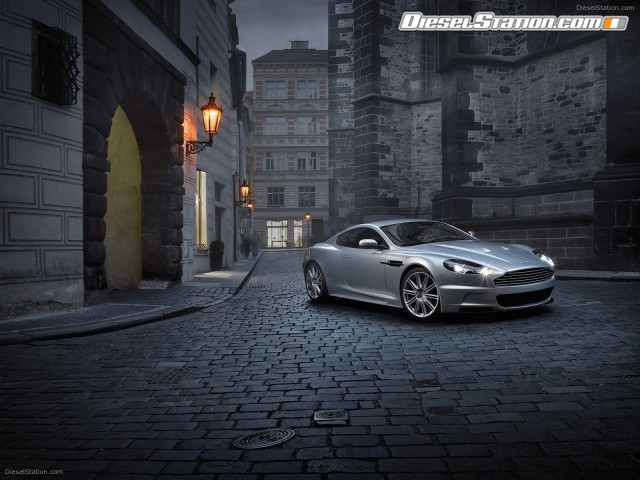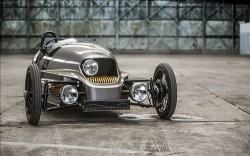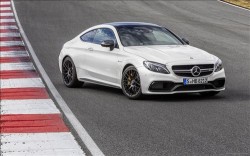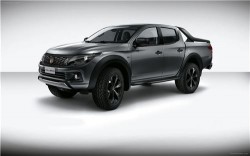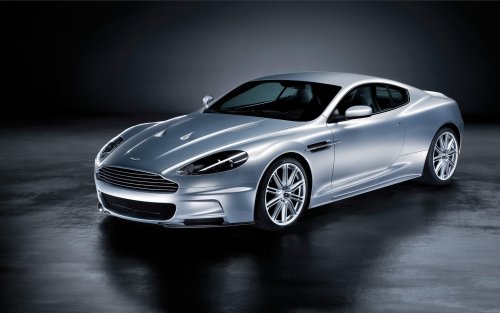Here's the production version of the Aston Martin DBS which was originally shown 16 months ago. The original show car was also featured in the James Bond movie Casino Royale.
The DBS will debut at the Pebble Beach Concours d’Elegance and go on sale in 2008. Power is handled by the DB9's 6.0 liter V12 but has been reworked to output 510 horsepower and 420 pound-feet of torque. Weighing in at 3,737 lbs, the DBS rockets to 62 mph in a claimed 4.3 seconds.
Continue reading for more wallpapers and press release.
Press Release:
Aston Martin will unveil the most eagerly anticipated car of the year when the new DBS is revealed at the Pebble Beach Concours d'Elegance on August 16th, where the company takes a starring role as the featured marque.
Aston Martin Chief Executive Officer, Dr Ulrich Bez, said: “The DBS is the ultimate expression of Aston Martin’s engineering and technical ability. It offers pure performance without compromise.
“The DBS delivers the complete driving experience and bridges the gap between our road and track cars – the DB9 and DBR9.”
Equally at home on a twisting mountain circuit as on the open road, the DBS is a true thoroughbred. The Aston Martin DBS is a 6.0-litre V12 powered, race-bred, two-seater shaped by the aerodynamic demands of high performance, with an exquisite interior that marries beautifully hand-finished materials with the very latest in performance technology.
A combination of elegant design, innovative manufacturing processes, race-derived materials and components and Aston Martin’s unrivalled hand-build expertise makes the DBS a luxury sports car without equal. Every line, crease and curve conveys the enormous potential of the DBS, a seductive blend of refinement and raw power, provided by the hand-built V12 producing 380kW (510bhp/517PS), a top speed of 191mph (302km/h) and a 0-62mph (0-100km/h) time of 4.3 seconds.
The DBS will be built at Aston Martin’s global headquarters at Gaydon, near Warwickshire in the UK, joining the current Aston Martin line-up. This now comprises the elegant DB9, the agile V8 Vantage Coupe and the critically acclaimed Vantage Roadster – launched earlier this year.
Deliveries of the DBS are expected to commence during quarter one 2008, with prices to be confirmed at the Frankfurt Motor Show in September.
Aston Martin DBS Specification
Body
• Two-door coupe body style with 2+0 seating
• Bonded aluminium VH structure
• Aluminium, magnesium alloy and carbon-fibre composite body
• Extruded aluminium door side-impact beams
• High Intensity Discharge (HID) headlamps (main beam)
• LED rear lamps and side repeaters
Engine
• All-alloy, quad overhead camshaft, 48-valve, 5935cc V12.
• Compression ratio 10.9:1
• Front-mid mounted engine, rear-wheel drive
• Fully catalysed stainless steel exhaust system with active bypass valves
• Max power: 380kW (510bhp/517 PS) at 6500rpm
• Max torque: 570Nm (420 lb.ft) at 5750rpm
• Acceleration: 0-100km/h (0-62mph) in 4.3 seconds
• Max speed: 302km/h (191mph)
Transmission
• Rear-mid mounted, six-speed manual gearbox
• Alloy torque tube with carbon fibre propeller shaft
• Limited-slip differential
• Final-drive ratio 3.71:1
Wheels and Tyres
• Front: 8.5’’ x 20’’ Pirelli P Zero 245/35
• Rear: 11’’ x 20’’ Pirelli P Zero 295/30
Steering
• Rack and pinion, Servotronic speed-sensitive power-assisted steering, 3.0 turns lock-to-lock. Column tilt and reach adjustment
Suspension
• Front: Independent double wishbone incorporating anti-dive geometry, coil springs, anti-roll bare and monotube adaptive dampers
• Rear: Independent double wishbones with anti-squat and anti-lift geometry, coil springs, anti-roll bar and monotube adaptive dampers
• Adaptive Damping System (ADS) with Track mode
Brakes
• Front: Ventilated carbon ceramic discs, 398mm diameter with six-piston calipers
• Rear: Ventilated carbon ceramic discs, 360mm diameter with four-piston calipers
• Dynamic Stability Control (DSC) with Track mode
• Anti-lock Braking System (ABS)
• Electronic Brakeforce Distribution (EBD)
• Emergency Brake Assist (EBA)
• Traction control
Dimensions
Length: 4721mm (185.9’’) Wheelbase: 2740mm (107.9’’)
Width: 1905mm (75’’) (exc. Mirrors)
2060mm (81.1’’) (inc. Mirrors)
Fuel tank capacity: 78 litres (17.2 Imp.galls, 20.5 US galls)
Height: 1280mm (50.4’’) Weight: 1695kg (3737lb)
Interior
Semi-aniline leather and Alcantara interior. Matrix alloy facia trim and Iridium Silver centre console finish. Carbon fibre door trims and door pulls. Auto-dimming rear-view mirror & garage door opener (USA & Canada only). Sports seats with ten-way electric adjustment, including height, tilt and lumbar. Memory seats & exterior mirrors (three positions). Dual-stage driver/passenger front airbags. Side airbags (Sports seats only). Heated seats (Sports seats only). Heated rear screen. Automatic temperature control. Organic Electroluminescent (OEL) displays. Trip computer. Cruise control. Hard Disk Drive (HDD) satellite navigation system1,2. Bluetooth telephone preparation1. Powerfold exterior mirrors. Front and rear parking sensors. Tyre-pressure monitoring1. Alarm and immobiliser. Remote-control central door locking and boot release. Battery disconnect switch. Battery conditioner. Tracking device (UK only). Boot-mounted umbrella.
In-Car Entertainment
• Aston Martin 700W Premium Audio System with Dolby® Pro Logic II®
• MP3 player connectivity
Options
• Lightweight seats with six-way adjustment, including front and rear height adjust (Does not include side airbags or heated seats feature. Not available in USA or Canada)
• 20’’ alloy wheels with graphite finish
• Satellite radio system (USA only)
• Piano Black facia trim and centre console finish
• Leather storage saddle
• Personalised sill plaques
• Auto-dimming interior rear-view mirror1
• Auto-dimming interior rear-view mirror with garage door opener (Europe only)
• Alarm upgrade (volumetric and tilt sensor)
• Tracking device3
• First-aid kit
• Ashtray and cigar lighter
*1 Not available in all markets
*2 Includes Traffic Messaging Channel (TMC) in Continental Europe
*3 Complies with UK Thatcham Category 5 requirements. Excludes subscription. Standard in UK.
Aston Martin DBS: Performance
The need for high-performance stability, handling ability and low kerb weight defined the DBS’s form and construction. Accordingly, the DBS becomes the first production Aston Martin to make extensive use of ultra-light carbon-fibre body panels. High levels of performance and control are delivered by the combination of inherent light weight, near-perfect weight distribution, a supremely powerful and flexible V12 engine, and a performance-honed six-speed transmission, together with new carbon ceramic brakes and an adaptive damper controlled suspension system.
At the heart of the DBS is a 6.0-litre V12 engine. The DBR9 and DBRS9 race cars are powered by an enhanced version of this same V12, tuned to produce in excess of 600bhp. The shared powerplant continues the strong link between Aston Martin’s road and race cars, just as the six-cylinder engine used in the DBR1 inspired a generation of engines in the DB4, DB5 and DB6 in the 1950s and 60s.
As with all current Aston Martins, the engine is hand-assembled at Aston Martin’s dedicated engine facility in Cologne, Germany. The classic 6.0-litre V12 features a number of power-increasing enhancements. These include a ‘by-pass’ engine air intake port that opens above 5500rpm to allow more air into the engine, and re-profiled air inlet ports that further improve airflow into the combustion chamber. Combined with a compression ratio of 10.9:1, the result of these enhancements is prodigious power and torque: the DBS delivers 380 kW (510 bhp/517 PS) at 6500 rpm. The 3.71:1 final-drive ratio ensures that the additional power is usable, enhancing in-gear acceleration in particular.
A lightweight, rigid structure is the design engineer’s ultimate goal, and achieving the right balance between strength and mass is crucial. Like the DB9 and its sibling DBR9 and DBRS9 race cars, the DBS uses Aston Martin’s class-leading all-alloy VH (Vertical Horizontal) architecture, a lightweight bonded aluminium structure that provides outstanding strength and rigidity. Aston Martin’s engineers have also employed advanced materials and processes to further reduce weight and increase the DBS’s performance and dynamics.
Carbon-fibre panels are used for the boot enclosure, boot lid, door opening surrounds, front wings and bonnet, giving a saving of some 30kg over more conventional materials without any reduction in strength. “There are no restrictions on form or shape in using carbon-fibre,” says Marek Reichman, Aston Martin’s Design Director, “and the material allowed us to wrap bodywork around the 20" wheels and maintain the precise relationship between the wheel and the bodywork.”
Each panel has been carefully sculpted to direct the airflow around the car, into the engine and to help cool the braking system. The carbon-fibre elements are produced using advanced manufacturing techniques developed from the aerospace and motorsport industries.
The new panel-making procedure also delivers an industry-best surface finish, thanks to a patented ‘Surface Veil’ process. The application of a 200 micron layer of epoxy and glass to the panel delivers a class-A surface that is in line with Aston Martin’s tradition of high-quality finishes. Inside the car, the weave patterns on the exposed carbon-fibre elements have been carefully selected to present the most harmonious surfaces.
Aston Martin DBS: Control
As with the DB9 and DBR race cars, the Aston Martin DBS benefits from the inherent characteristics of the VH architecture. The VH underframe consists of pressed, extruded and cast aluminium components, bonded together to create an immensely strong underlying structure.
This structure means that weight is kept to a minimum, with the front-mid mounted engine and rear-mid mounted transaxle ensuring a near perfect weight distribution: 85% of the car’s weight is positioned within its wheelbase. The DBS’s polar moment of inertia is therefore very low, producing a car with natural agility, a strong, stable platform for the V12’s high power output and an exhilarating driving experience.
To take full advantage of its extremely precise and rigid platform, the DBS employs a new and sophisticated Adaptive Damping System (ADS) which uses two separate valves to set the dampers to five different positions, allowing instant adjustment of the car’s ride and handling characteristics. The ADS automatically alters the suspension settings to ensure the driver has high levels of control at all times, with the ability to respond instantly to different driving conditions. The dampers can be ‘softer’, with a corresponding improvement in ride quality, or ‘firm’, providing improved body control for more spirited driving.
The damper settings are determined by an electronic control unit which takes sensor readings from the car’s systems, including throttle position, brake position, steering wheel rotation and vehicle speed. This data establishes the prevailing driving conditions and the demands the driver is making on the car.
The DBS’s Adaptive Damping System perfectly captures the car’s sporting character, ensuring that stiffer dampers are available for better handling and control when the car is being driven enthusiastically, without compromising ride comfort during ‘normal’ driving conditions. A designated ‘Track’ mode automatically sets all dampers to their firmest positions, making it ideal for circuit driving. The DBS is fitted with Pirelli P-Zero tyres that have been developed especially for the car, along with new 20" lightweight alloy wheels.
The DBS also has a revised Dynamic Stability Control (DSC) system, designed to help maintain maximum traction in challenging driving conditions. In default operation, the DSC is automatically on. Select and press the button for two seconds and DSC ‘Track’ mode is engaged, raising the threshold at which the system intervenes to allow the experienced driver to explore the car’s limits. Hold the button for four seconds and DSC is disengaged entirely.
The car’s braking system features another innovation, the first time Carbon Ceramic Matrix (CCM) brakes have been used on a road-going Aston Martin. The end result is shorter stopping distances with excellent resistance to fade in even the most demanding driving conditions. CCM brakes are also some 12.5kg lighter than a conventional system, reducing the weight of the car overall and, in particular, the unsprung weight and rotational masses, further enhancing the performance of the suspension.
Aston Martin DBS: Design
The DBS is manufactured using the finest materials, with a combination of hand-finishing and pioneering high-technology processes. From the exceptional quality of the design and finish to the advanced production techniques employed to save weight and create strength, the DBS is both a technological masterpiece and a powerful visual and tactile experience, inside and out.
The DBS is the culmination of the DB bloodline, a synthesis of race-bred technology and road-going practicality that can be traced back to the iconic DB2, DB3S and DB4GT, and is continued today with the DBR9 and DBRS9 race cars. The DBS’s powerful, flowing form fuses the visual language of the DBR9 GT1 race car with the innate elegance of the DB series. Lower and tauter than other Aston Martin production models, the DBS has subtly flared wheel arches accommodating standard 20" diameter wheels and tyres. These provide excellent stability and grip, while giving the car a muscular and athletic stance that evokes the DBR9 and DBRS9. The design process involved continuous revision and honing of the DBS’s surfaces, ensuring that the shapes and forms represent perfectly the car’s inherent power, while never diluting the fundamental proportions that are the essence of every Aston Martin.
The external detailing reflects the power and dynamic abilities of the DBS, with revised inlets and enlarged grilles that deliver more air into the engine and increase its cooling capacity. Subtle design details include a new five-bar design for the polished alloy main grille, as well as two additional vents in the enlarged power bulge on the carbon-fibre bonnet. These vents are entirely functional, improving engine performance and efficiency, yet also communicating the increased power output of the uprated V12 engine.
The DBS’s aerodynamic enhancements are shaped by Aston Martin’s racing experience. A carbon-fibre splitter and a new front bumper design help channel airflow around the car’s wider bodywork. The aerodynamics team worked hand in hand with the modelling team to ensure that the forms and surfaces of DBS were sculpted for inherent stability at high speeds.
The widened front and rear track improve handling and give the car a more muscular character. To accommodate this additional width, the surfaces of the wings have been sculpted and re-shaped with harder lines, which also serve to emphasise the car’s strength and power. The lowered ride height is accentuated by the enhanced side sills, carefully profiled to improve aerodynamic performance and reduce drag along the flanks. The iconic Aston Martin side strake, a design feature of every DB car since the DB4, has been redesigned for the DBS, incorporating a side repeater formed by a bank of LEDs.
Improved aerodynamics shape the rear of the DBS, where the more prominent boot spoiler is carefully incorporated into the carbon-fibre boot lid. A horizontal chrome finisher is set into the lid to accentuate the wide track of the new car. The car's flat undertray helps to improve the aerodynamics of the underbody surface and culminates in a new carbon-fibre rear diffuser, another feature carried over from the race cars. This device creates an area of low pressure beneath the rear of the car, reducing lift and improving high-speed stability without the need for large, unsightly external spoilers. The new one-piece diffuser also incorporates the DBS’s large and distinctive twin exhaust tailpipes.
The interior of the DBS represents the epitome of Aston Martin’s commitment to using materials honestly, without disguise or embellishment. Lightweight materials are used throughout to save weight; door pulls are made from carbon-fibre, for example, and the carpet has been woven with lighter fibres to save valuable kilograms. Special semi-aniline leather is used throughout the cabin, saving weight as well as giving a soft feel and distinctive aroma.
The DBS features unique primary controls, including a new steering wheel profile with a twin-stitched detail marker that indicates the ‘on-centre’ position. The gear knob is fashioned from polished alloy to echo the metallic finishes on the new centre console. The instrument cluster is designed with white numerals on a dark graphite background for excellent legibility. The twin-stitch pattern runs through the interior as a signature device; the alignment of both stitch lines is testament to Aston Martin’s ongoing tradition of exceptional craftsmanship.
As an option the DBS may be equipped with specially developed lightweight seats (outside North America). These feature a carbon-fibre and Kevlar® composite structure and are manufactured by a supplier to the motorsport and aviation industries before being returned to Aston Martin’s Gaydon factory for hand-trimming. The structure is created by sandwiching a layer of Kevlar® between two layers of carbon-fibre with the outer finish left exposed on the seat backs, lacquered to create a durable and attractive finish.
The combination of Kevlar® and carbon-fibre provides crucial weight saving by allowing the structure of the seat to be incredibly slim: between 2.5mm and 3mm. Overall, the trimmed seat provides a weight saving of 20kg. The lightweight seats are a fixed structure, but can be adjusted for rake as well as sliding fore and aft.
The DBS start sequence blends tradition with high technology and a touch of theatre. The ignition ECU (Emotion Control Unit) has evolved into a machined and highly tactile polished sapphire ECU, incorporating a stainless steel inner case. Resembling a fine wristwatch or a piece of contemporary sculptural jewellery, this sapphire ECU epitomises the spirit of the DBS.
To operate the car, the sapphire ECU is inserted into a special docking station in Aston Martin’s signature dashboard-mounted sapphire starter button, and glows red to indicate when the car is ready to start. The engine is fired by pressing the ECU flush with the surface of the starter button. After pressing to stop the engine, the ECU automatically motors out of the dashboard for removal.
The start sequence of the DBS is augmented by an all-new centre console design with a cast metal surround, crisp typography and new graphics. The new console has a traditional dial-face clock at the centre, flanked by two rotary controls for the heating and air-conditioning system, fashioned from solid, turned aluminium.
These controls are also used to navigate the audio system, Bluetooth telephone preparation and satellite navigation functions. The Aston Martin 700 W Audio System, with Dolby® Pro Logic II® has been exclusively developed for Aston Martin to provide outstanding sound quality. A slot for the six-CD autochanger is located at the top of the console, while within the centre armrest cubby box there is inbuilt connectivity for MP3 players. Bluetooth telephone preparation is standard on the DBS, enabling you to synchronise your mobile telephone directory through the car’s display screens. It can also display the last 10 calls received, made and missed.




